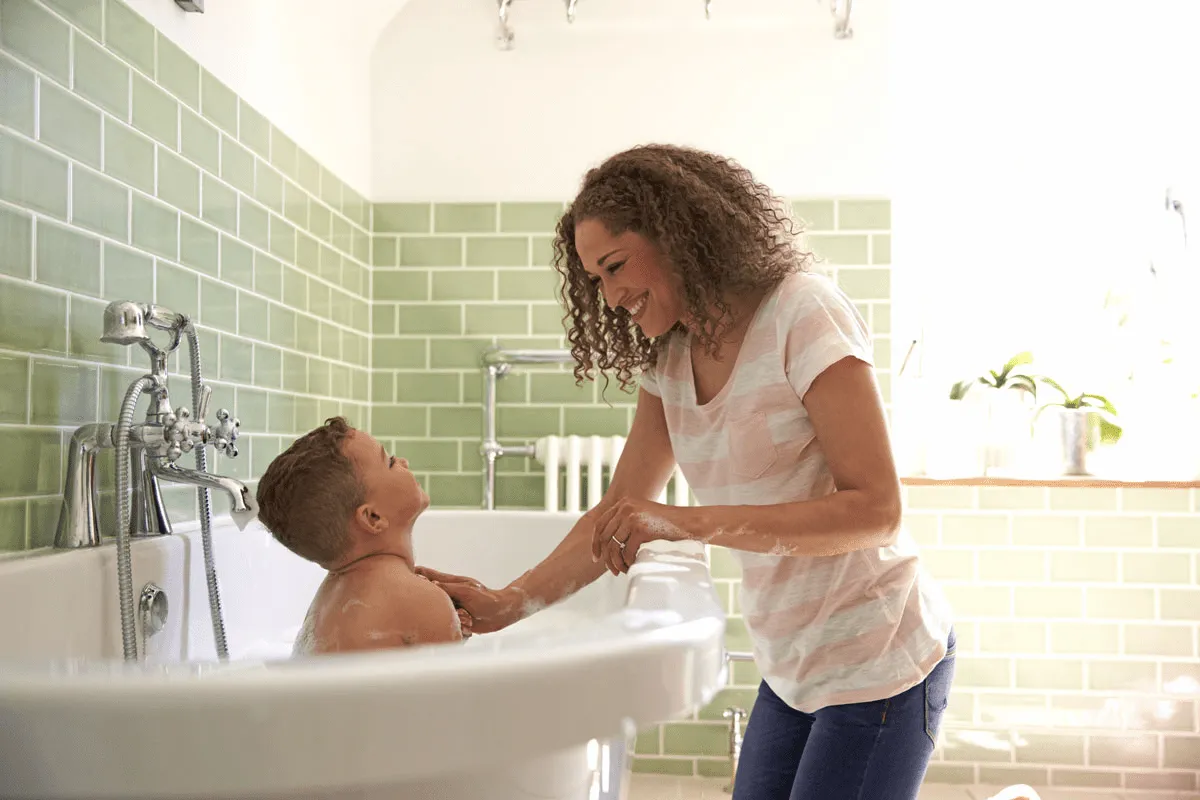Let’s be honest…
As much as you’d love to spend all day helping your child practice their speech skills and overcome their speech delay as quickly as possible – your busy schedule doesn’t leave any extra hours for you to push back on.
For better or worse, this is the reality for most parents today, especially those with a little one lagging in the speech department. Fortunately, there is a simple solution to this problem.

Instead of trying to free up time in your already tight schedule, you can incorporate speech activities into your bedtime routine. Think of moments like nightly reading, bath time, brushing teeth, slipping into pajamas, and tucking in before a good night’s sleep.
So to help you practice speech activities with your child without hopelessly falling behind on the rest of your schedule, here are 5 key opportunities to squeeze some guilt-free speech practice in.
1. Bath Time
- Label objects: During bath time, ask your child to label the objects around them, such as the tub, water, shampoo, soap, sponge, and washcloth. If they can’t name an object, hold that object or point to it, and then teach your child how to pronounce its name. For older children, you can also practice using the word in a sentence.
- Use adjectives: Bath time is a great opportunity for teaching your child about adjectives. You can ask them how things feel using questions like “does the soap feel good?”, “is the water warm enough?”, and “does the shampoo smell good?”.
- Recall the day’s events: Recalling the day’s events encourages your child to put their memory and speech to work. You should ask them specific questions like “what did you eat for lunch?”, “did you read a book today?”, and “which games did you play?”. It’s best to stick with questions you know the answers to so that if your child gets stuck, you can help them out.

2. Putting on Clothes
After enjoying a warm bath, let your kids choose which clothes they want to wear. But make sure they use words to request the correct ones instead of just pointing towards them.
Another thing you can do when helping your child put on their clothes is to talk about what you’re doing while you’re doing it. You can label the objects your child is putting on. Shirts, pants, pajamas, slippers, or socks – point out any objects you can find. From there, give a live commentary on the action your child is performing, such as putting on, pulling up, or taking off.

3. Brushing Teeth
- Instruct your child with location words: Use location words to tell your child where to brush next, like the teeth at the top, bottom, back, front, or middle.
- Sing the ABCs: While your child is brushing their teeth, sing the ABCs to them. When they’re done brushing, tell them it’s their turn to sing back to you.
4. Tucking In
When your child goes to bed, tuck them in tight and ask them to guess one thing they think they will dream about tonight. Encourage them to describe as many details as they can about their prediction.
This sets you up for another effortless bout of speech practice in the morning by asking your little one what they dreamt of. Be sure to ask them if their prediction was right.
5. Nightly Reading
After tucking your child in, have some story time. You can take a book out or pull one up on your tablet or make one up on your own.
What matters is that you read it out with your child and have some fun while you’re at it. Doing so will not only help them fall asleep, but also increase their vocabulary and improve their reading skills.

- Hold the book in front of your face, not your mouth. This way your child will be able to see how you move your mouth to pronounce certain words
- Don’t just read to your child. Tell them to take part by repeating every word after you so they can improve their speech while enjoying the story
- If your child is old enough for school, you can improve their reading skills by encouraging them to try to read a few paragraphs from the book. You can make it into a turn-based game where you and your child take turns reading a page, paragraph, or sentence to each other
